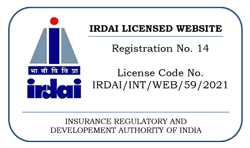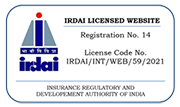Yes, it is possible to have multiple health insurance plans in India. Similar to the concept discussed earlier, having multiple health insurance plans in India can provide you with enhanced coverage and financial protection against medical expenses.
However, there are some important points to consider:
Coordination of Benefits: Just like in other countries, having multiple health insurance plans in India involves coordinating benefits between the different policies. One plan would typically be considered the primary insurer, and the other(s) would be secondary insurers.
Coverage and Benefits: Different health insurance plans come with varying coverage limits, benefits, and exclusions. It is crucial to carefully review the terms and conditions of each plan to understand the extent of coverage and the specific benefits provided.
Network of Hospitals: Health insurance plans often have tie-ups with specific networks of hospitals and healthcare providers. Make sure to check if your preferred hospitals and doctors are included in the networks of all the plans you are considering.
Premiums: Having multiple health insurance plans means paying multiple premiums. Evaluate whether the combined premiums are within your budget and if the additional coverage justifies the cost.
Claim Process: Understand the claim process for each policy. It is important to know how to file claims, what documents are required, and the timeline for reimbursement.
Pre-existing Conditions: Some health insurance plans might have waiting periods or limitations for covering pre-existing conditions. Be aware of how each plan treats pre-existing conditions.
Policy Limits: Each policy comes with its own coverage limits. Make sure you understand the maximum coverage amount for each plan.
Mediclaim Policies: In India, health insurance policies are often referred to as mediclaim policies. It is essential to understand the terms used in the policies and the specifics of the coverage.
Regulations: Health insurance regulations in India can change over time, so it is important to stay updated on any regulatory changes that might affect your coverage.
Disclosure: When applying for multiple health insurance plans, ensure that you provide accurate and complete information about your existing policies. Failure to disclose existing coverage could lead to complications during claims processing.
Before opting for multiple health insurance plans in India, it is recommended to:
Review the terms and conditions of each plan thoroughly.
Contact the insurance providers to understand the coordination of benefits process.
Assess your healthcare needs and the potential benefits of having additional coverage.
Compare the premiums, benefits, and coverage limits of the different plans.
Seek advice from insurance professionals or financial advisors if needed.
Remember that the specifics of health insurance policies and regulations can vary, so it is important to make decisions based on your individual circumstances and needs.
Health Insurance Claim procedure in Multiple policies in India
Coordinating health insurance claims when you have multiple policies in India involves following a specific process to ensure that you receive the maximum possible coverage without any confusion or complications. Here a general outline of the claims procedure:
Inform Both Insurers: If you have multiple health insurance policies, inform both insurance companies about your situation. Provide them with accurate and complete information about your existing policies.
Primary and Secondary Insurer Determination: The insurance companies will determine which policy is the primary insurer and which is the secondary insurer. The primary insurer will process the claim first, up to its policy limits. The secondary insurer will consider covering the remaining eligible expenses based on its policy terms.
Primary Insurer is Claim Submission: When you receive medical treatment, submit a claim to the primary insurer as per their usual claims procedure. Attach all necessary documents, including bills, medical reports, and other supporting documents.
Claim Settlement: The primary insurer will process the claim and reimburse you or directly pay the hospital, depending on the terms of the policy. They will provide you with an Explanation of Benefits (EOB) or a claim settlement letter detailing the covered amount.
Documentation: Once you have the EOB from the primary insurer, submit the same set of documents to the secondary insurer. This generally includes copies of the primary insurers EOB, the original bills, and other required documents.
Secondary Insurers Claim Processing: The secondary insurer will review the documents and process the claim based on its policy terms. They will determine the eligible amount for reimbursement.
Secondary Insurers Payment: The secondary insurer will provide reimbursement for eligible expenses that were not covered by the primary insurer. This amount is typically subject to the secondary policy is terms and limits.
Coordinated Settlement: The combined reimbursements from both insurers should not exceed the actual medical expenses you incurred. The secondary insurers payment, when added to the primary insurers payment, should not exceed the total cost of the treatment.
Important points to note:
Each insurance company may have its own process for coordinating benefits, so make sure to understand their specific requirements.
Some expenses might not be covered by either policy. Be prepared for potential out-of-pocket costs.
Keep track of all communication, paperwork, and correspondence related to your claims.
If you are uncertain about any aspect of the claims process or coordination of benefits, reach out to the customer service departments of both insurers for clarification.
Remember, the specific steps and requirements can vary based on the insurance companies and policies involved. It is recommended to carefully read and understand the terms and conditions of each policy and communicate openly with both insurers to ensure a smooth claims process.




